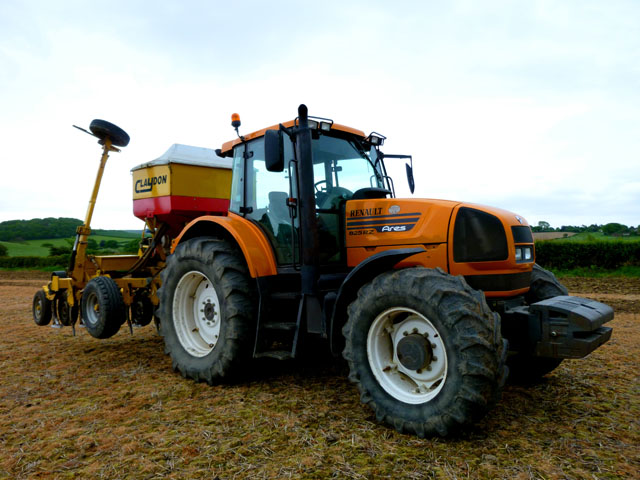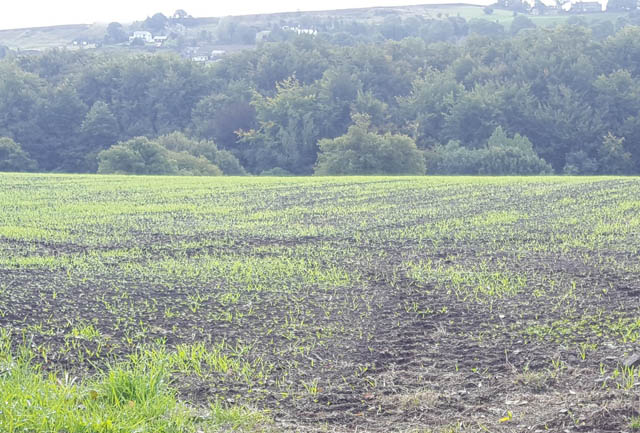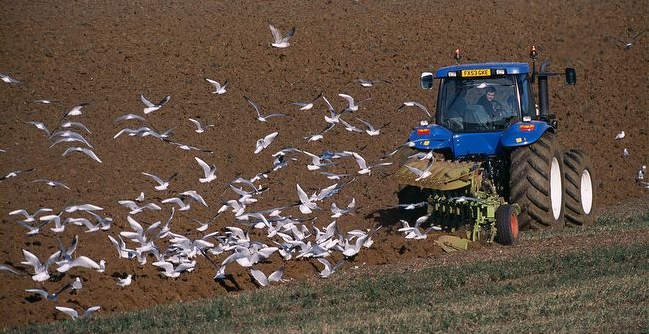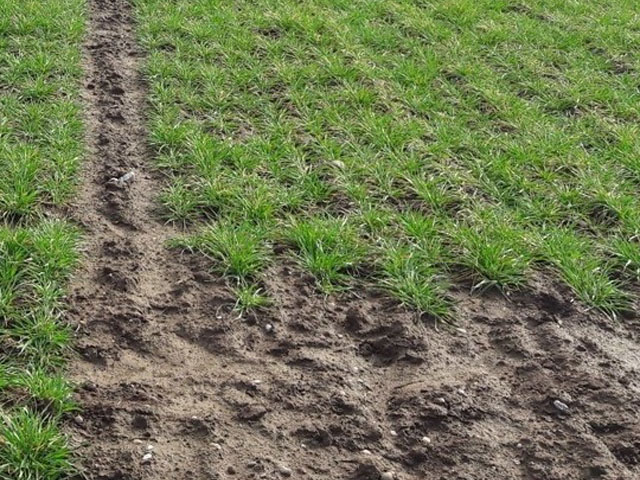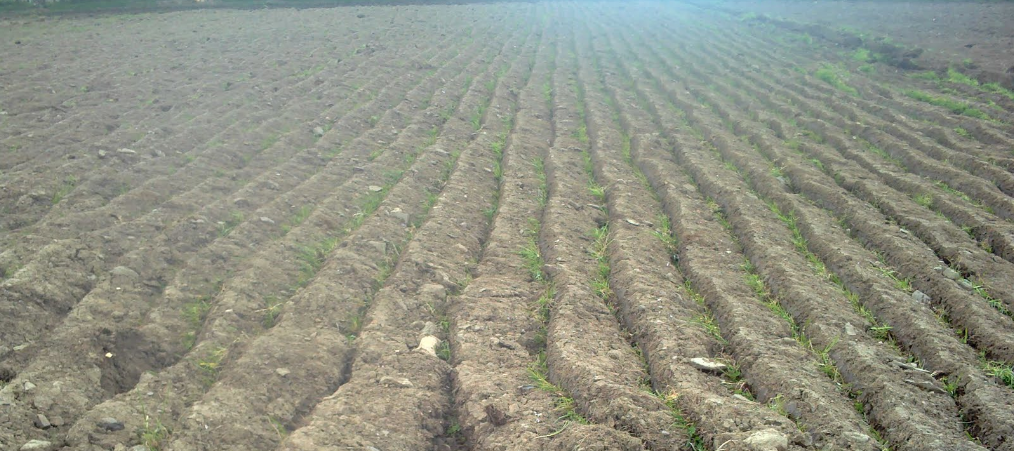We gained our experience using the Claydon direct drill but there are other direct drills on the market which use discs or different tines. The Claydon was chosen because of its leading soil loosening tines and it’s ability to place the seeds into fresh soil which is achieved by it being lifted by the A share and the seed being placed by this A share under the surface trash. You could argue that this is a better place to put the seed rather than in a slot which, as we know, can fill with water in wet conditions. Disc drills can also force down surface trash into the bottom of the slot and there by seed is placed on top of it, the hairpin effect, which is not ideal as we know.
After 4 or 5 years of no-till, you can easily see the advantages of not inverting the soil. It enables you to travel on the land sooner in the spring and the soil carries tractors and combines much more easily with virtually no evidence of ruts from the combine, unless of course when the conditions are wet.
Essentially direct drilling, non inversion and no-till all fall into the same category of crop establishment, but no-till is the key word. By ‘no-tilling’ the soil has the chance to transform itself into something completely different from ploughed and cultivated land. Many publications on the subject and information regarding no-till is readily available.
It is thought that most damage is caused to the soil by the 2 machines which most farms have: the plough and the power harrow, both of which kill off the life in the soil and deplete organic matter.
Experts in ‘no-tilling’ are quick to point out what damage the plough does to the soil.
Read some of the advantages of no-till listed below:
- Yield benefits – the two-tine technique (see Claydon website). The first set of rigid (soil-loosening tines) break through compacted soil creating drainage directly below the seeding zone to ensure that seeds do not become waterlogged and rot.
- When using the Claydon system, the seed is always in loose soil slightly below the surface and between columns of undisturbed soil, reducing compaction of the soil in the critical root-growing area (see Claydon website).
- It helps prevents water logging and conserves the moisture in the soil.
- It reduces soil compaction.
- Lower seed rates can be used compared to conventional cultivation systems.
- The soil suffers less from soil washing and reduces the release of chemicals and pesticides into rivers and water supplies.
- Earthworms casts are high in fertilizer and also help in the decomposition of chopped straw/trash.
- A reduction in fertilizer input due to increased number of worm casts which are rich in nitrogen and potash e.g. 1.4 tons of earthworm casts per Ha per year.
- Un-tilled soil is able to support machinery better – allowing machinery to travel as on a meadow/stubble field all year around.
- Roots grow more easily and becomes strong enough to tap into the columns of undisturbed soil to find moisture and nutrients when strip till seed drilling.
- Naturally structured soil holds chemicals and nutrients much better than cultivated soils.
- It takes advantage of the sub-soiling effect that occurs naturally when the ground cracks during autumn and the summer months. Ploughing fills in this naturally occuring cracks.
- Significant reduction in weed growth as there is no unnecessary soil disturbance in the untouched soil between the seeded rows.
- Time and cost savings through cutting the number of cultivation passes in terms of fuel used and the number of earth-wearing parts.
- The residue left on the surface after certain crops provides ideal cover for wildlife.
- UV light, birds and insects have access to weed seeds left on the surface.
- A vertical structure can form in the soil as opposed to horizontal structures created by cultivations and wheelings. [reference Sulky Min Till guides]
- Produces a porous and stable soil profile allowing free movement of water, air and living organisms. [Sulky]
- Increase soil organic matter to provide good structural stability and biological activity. [Sulky]
- Organic matter produced by the breakdown of sugars and cellulose is fuel for soil organisms. [Sulky]
- The soil structure is regenerated by biological activity created by earthworms, roots and mycorrhiza (see Wikipedia http://en.wikipedia.org/wiki/Mycorrhiza) during crop development. [Sulky]
- The previous years’ crop residues ie. roots, stubble and chopped straw and even cover crops benefit from being left on the surface to be converted into organic matter, ploughing does not have the same effect.
- You can travel sooner on unploughed land after rainfall.
- No ploughing-up of clods which then need working-down into a tilth.
“I need to plough to bury the surface trash?”
This is a field of winter oil seed rape after winter barley. It was expertly ploughed at the right speed without any ‘throwing’ of the furrow slice. With the number of barley volunteers seen it demonstrates how inefficient ploughing can be, leaving a proportion of weed seeds and seed from the previous crop both on the surface and some partly buried at the right depth to allow germination.
A sight to behold but when you plough up worms you are killing the creatures that provide drainage for your soil. They also remove compaction and provide fertilizer in the form of nitrogen and potash in the casts that they produce, all without cost! When using a no-till method of crop establishment earthworm numbers can increase to 3 tons of earthworms per hectare in comparison to 600kg of earthworms per hectare in cultivated soil.
“I need to cultivate deep to get the land to drain?”
There is a tendency for growers to over cultivate and lose soil structure. Agrii trials to assess the effect cultivations have on water infiltration (Arable- Farmers Guide September 29th 2017) showed that after one pass with a min-till machine before drilling, it allowed 20mm of water infiltration per hour. After two passes with the same machine the rate dropped to just 5mm per hour. This goes to show that the more you cultivate the more you restrict water infiltration.
It could be said that the less you cultivate and move the soil the more improvements there are to its condition and in these days of climate change it is becoming more apparent that the soil benefits especially that the winters seem longer, wetter and warmer and the summers are cooler and shorter. The ground is no longer dried out before winter by long hot ground cracking summers, highlighting the need to make the soils more permeable in readiness for the winter months. This can be achieved by doing less cultivations which in turn requires less diesel, steel and time.
” There’s only one way to get rid of the surface trash and crop residues is to plough it in?”
The plough would solve every farmers’ weed problem if it could turn every cubic inch of soil downwards accurately through 180 degrees and bury it below the depth at which it germinates without any ‘throw’ of the top portion of the furrow slice. We all know how much of the ploughed in residues end up back on the surface when ploughing the headlands!
“Start to do more for your soil, move it less!”
Pictured in May 2018, this winter barley crop is still heavily infested with black grass after the farmer was advised to plough it slow and accurately, the same advise given by LEMKEN, which goes to show that it’s impossible to bury all of the weed seeds.
Slow full inversion ploughing still only partly buries the previous crop and or the weeds and weed seeds. While good ploughing buries most of the previous crop or crop residue’s it is not completely efficient. You could question what is it’s actual purpose as it only partly buries the surface trash, weeds and weed seeds. The picture above shows a field with a heavy infestation of black grass. After combining, a proportion of the black grass seeds will not be completely buried by ploughing and these will produce next years flush of the grass weed bringing into question what is the purpose of ploughing other than to create an aesthetically pleasing seed bed.
It is without doubt that ploughing and power harrowing can create a nice tilth offering good seed to soil contact but this can also be achieved very easily when you do not plough. The required tilth is easier than you think to obtain when you practice minimal disturbance and non inversion even in heavier soils.

